Galleries
‘It Becomes Impossible’: Why One Gallerist Says Berlin Is No Longer Hospitable to Contemporary Art Dealers
As the Berlin gallery EXILE announces its move to Vienna, we speak with its founder about the challenges facing emerging galleries today.
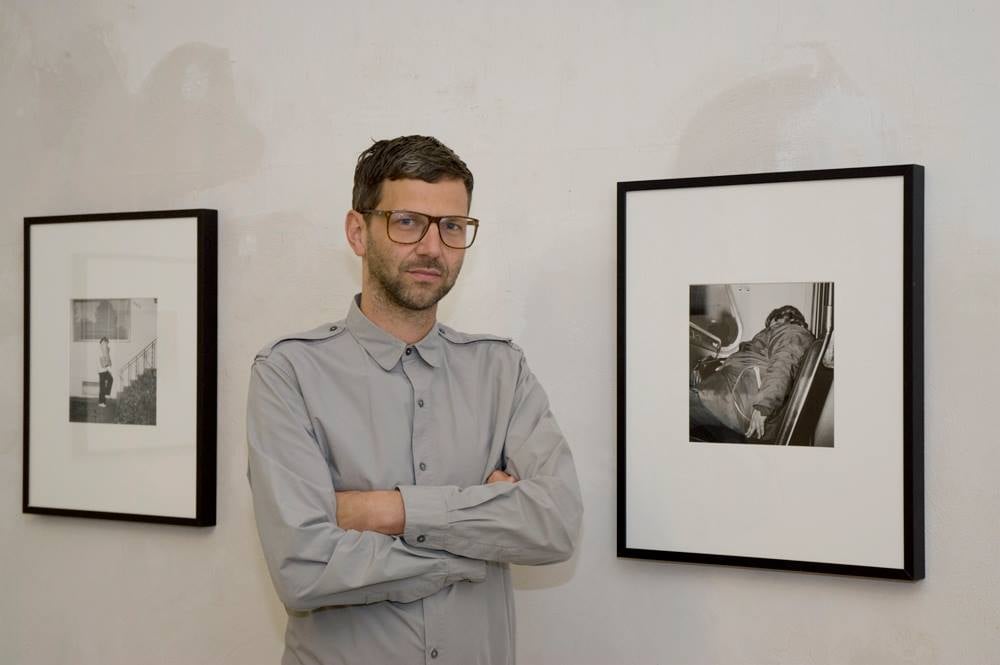
Berlin is widely regarded as an art-loving haven where artists can find a productive and enduring home. But there is another part of the art-world ecosystem for which the city is becoming increasingly inhospitable: Galleries.
This past Sunday, the founder and director of EXILE Gallery, Christian Siekmeier, celebrated 10 years in Berlin and made an official announcement: He’s leaving Germany and relocating to the Austrian capital of Vienna in August. Siekmeier is one of those dealers whose business qualifies as emerging and small, but not young—although these terms are often regarded as interchangeable in art-market conversations.
The gallery’s program includes Memphis Group painter and designer Nathalie du Pasquier and American photographer Gwenn Thomas alongside a younger crop of artists like Lithuanian duo Pakui Hardware. Recently, EXILE popped up in Palermo for the roving European biennial Manifesta, where it organized a collateral event. Increasingly, Siekmeier says, Berlin has become an untenable place for a modest dealer like him to stay afloat.
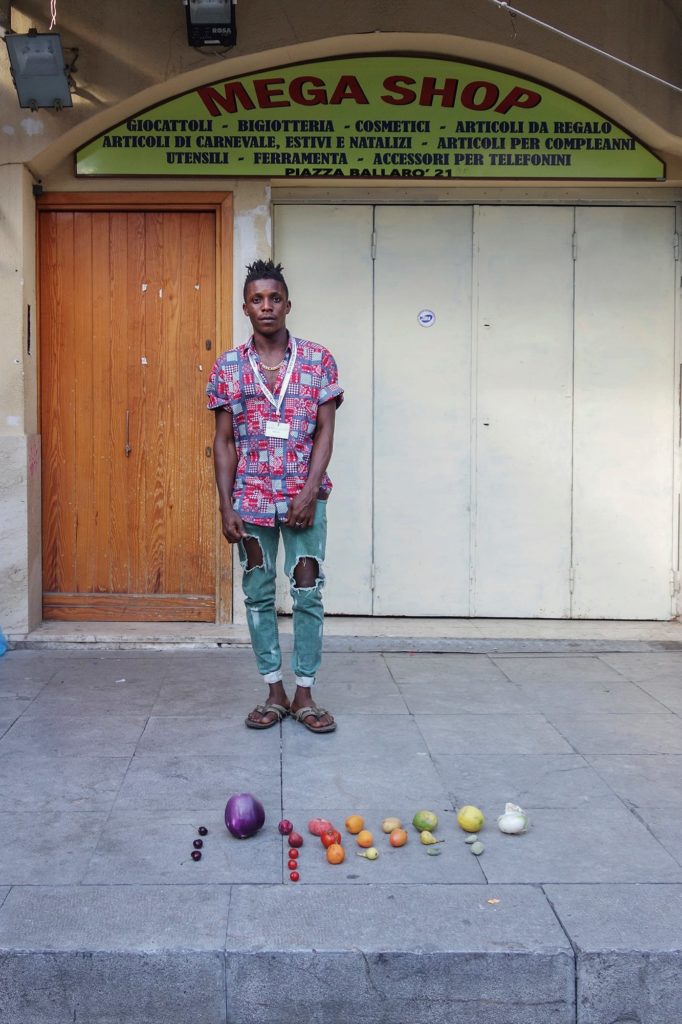
Humphrey Iduozee and Paul Sochacki, Installation view, May the bridges I burn light the way, EXILE at Manifesta 12, Palermo, 2018.
The German gallerist is not alone. Over the past five years, a number of small and mid-level galleries in the city have closed or set up shop elsewhere. Micky Schubert, who boasted a strong and well-liked program in Berlin and participated in major fairs including Art Basel, closed her gallery last year to launch an incubator in Brooklyn that aims to tackle problems faced by fellow dealers. Similarly, the five-year-old gallery Gillmeier Rech closed for good late last month.
Then there are Croy Nielsen and Galerie Crone, two Berlin mainstays that have also moved to Vienna in recent years. Considering the fact that the Austrian city has experienced a sharp rise of right-wing nationalism, these moves (driven by a combination of business and personal motivations) likely say more about the art market in Berlin than the appeal of Vienna.
Indeed, despite all the hype and an influx of wealthy start-up professionals to the city, some of Berlin’s dealers are suffering from a rising cost of living, a substantial taxation on all artwork, and a relatively small local collector base. We spoke with Siekmeier, one voice in a chorus of frustrated and tired gallerists, about the evolution of the German art scene and why he feels it’s time to move on.
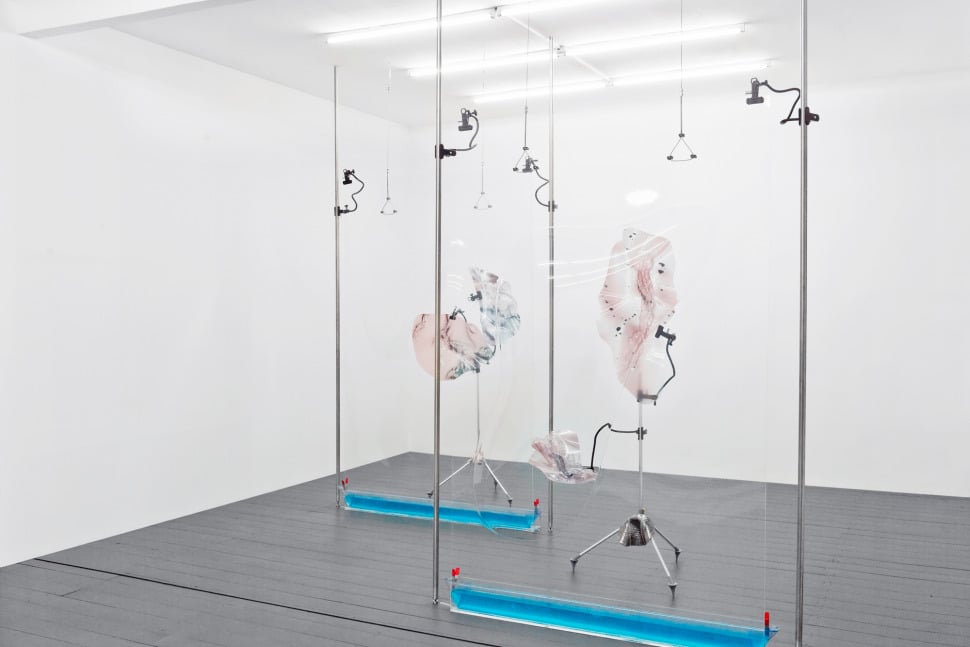
Pakui Hardware at Exile Gallery (2017).
After 10 years, why are you leaving Berlin?
The last 10 years in Berlin have been incredible, but the city has also changed quite dramatically. I decided it is time for a new chapter, though this time not within Berlin. Rents have sky-rocketed and interesting spaces have become increasingly rare while a kind of political blindness and antagonism amongst the gallery scene have created a defeatist distance and eroded much of the city’s original energy.
Why Vienna? On the surface, it seems like an odd choice to leave a city like Berlin for a city in a country that just elected a right-wing government. Many figures in the art community are worried about their future.
I believe smaller art scenes are potentially more nourishing, because there is more opportunity for community. Maybe it is less easy to categorize and marginalize than it is in Berlin. In terms of politics, I am trying to take the political situation as a challenge in terms of my programming. There is a certain complacency that one finds in Berlin, coupled with an overdosed saturation and a lack of common goals. I do think in Vienna there is a greater need and reception for more programmatic exhibitions.
A gallery’s operating costs are about the same across both cities. I am mostly trying to find a sustainable model on a scale that maintains the independence that I think I’ve given up for a while by playing too much into this idea of an art gallery that finances itself through sales.

EXILE showing Nathalie du Pasquier and Patrick Panetta, LISTE Basel, 2015.
It seems like everyone is talking about how much the middle market is struggling. Some blame art fairs, though Marc Spiegler refuted this in a recent interview with artnet News. What’s your experience?
I do see a correlation. Fairs and events like Gallery Weekend Berlin are happy to cash in on the money and grant small galleries access to whatever they think they can provide, but then there is no lasting responsibility.
I’m retreating from fairs. Art Brussels was my last one. And if I say that, it might be a Maurizio Cattelan moment, but that’s my decision now. I am not doing fairs that are not engaged and not interested in dialogue. Too many young galleries have pumped their money into fairs and—boom—they go bust. But my withdrawal from the fair circuit is not solely a financial concern, it’s an ideological concern as well.
What is your ideological concern?
It’s just so easy to dissect the layout of a fair to see how the audience gets manipulated into assuming how certain things have value over other things. Whether it’s called “discovery,” “emerging,” “focus,” or “frame,” it doesn’t matter—it’s always the same. There are subtle indicators to tell collectors that this is a different section. It indicates to an audience that it’s a young section and that it’s a cheap section. Such spatial separation conveys that it’s not supposed to be taken too seriously in terms of collecting. It promotes a creative value distinction instead of social and cultural community.
I feel galleries like mine are in these sections to function as the legitimizing framework for sales in the blue-chip section. Just look at the layout of a fair and it is all too obvious. And fine, trade your Jeff Koons—it’s no problem for me. I think it is an interesting idea to think of a corporeal fair like Art Basel or Frieze in terms of stock trading. But I do not want to be the one who spends my money affirming such market excesses.
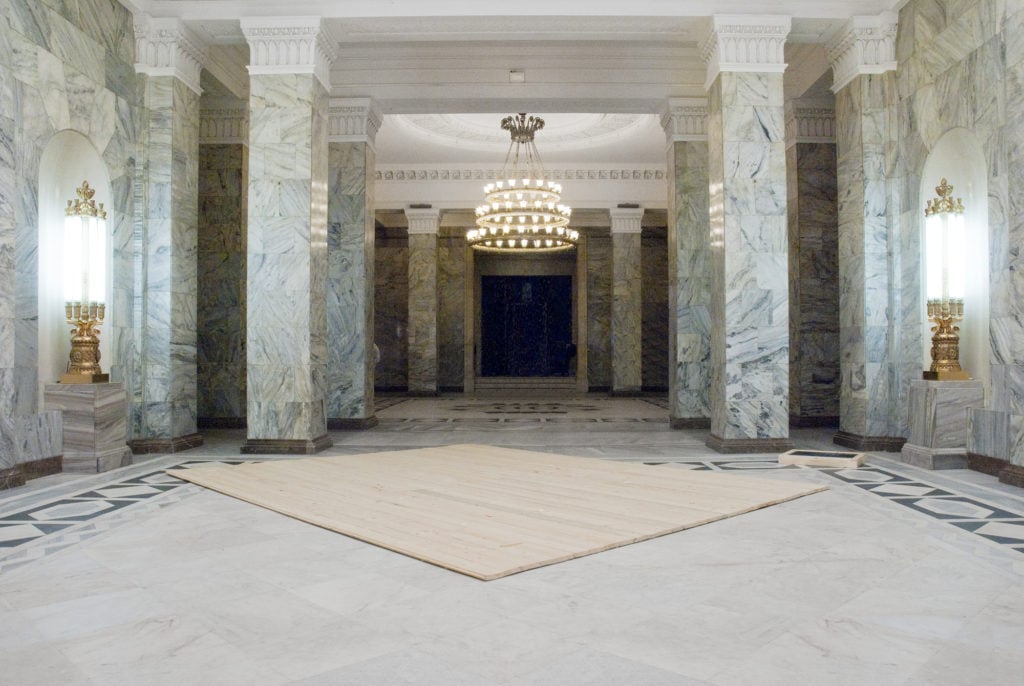
Kinga Kiełczyńska: Place of Power / Miejsce Mocy, 2016. Installation view, Not Fair, 2017
Why do you think current fair model works for some small galleries and not others? Why do you think it wasn’t working for you?
Fairs seem to be successful if you have a particular branding strategy. To show an 80-year-old artist and then show Nathalie du Pasquier and then Pakui Hardware like I do does not work well in fair terms. The tighter a gallery’s definition of showable art, the better for the branding within the capital fair scene.
When I went to LISTE one year, some gallerists who were visiting the fair said to me, “Oh, we would kill to be here.” But the experience of LISTE was problematic as well. Every year, the booth becomes more and more expensive, and if after three years, you do not make it into Art Basel, you are welcomed back to LISTE but have to pay a kind of penalty. It becomes impossible.
Or, if you’re showing an artist over the age of 40, you have to pay €3,000 more. I accepted the conditions, but I paid €17,000 for my booth because I was showing a massive 1986 painting by Nathalie du Pasquier. I understand that they want to define themselves as young, but I think that’s discriminatory and inappropriate for our time.
I still experience collegiality, collaboration, and fairness amongst most artists, but the gallery scene is trapped in antagonism and lack of vision. I do think it is urgently time to reflect, take responsibility, leave categorization behind to rediscover common ground and redevelop a sense of community.
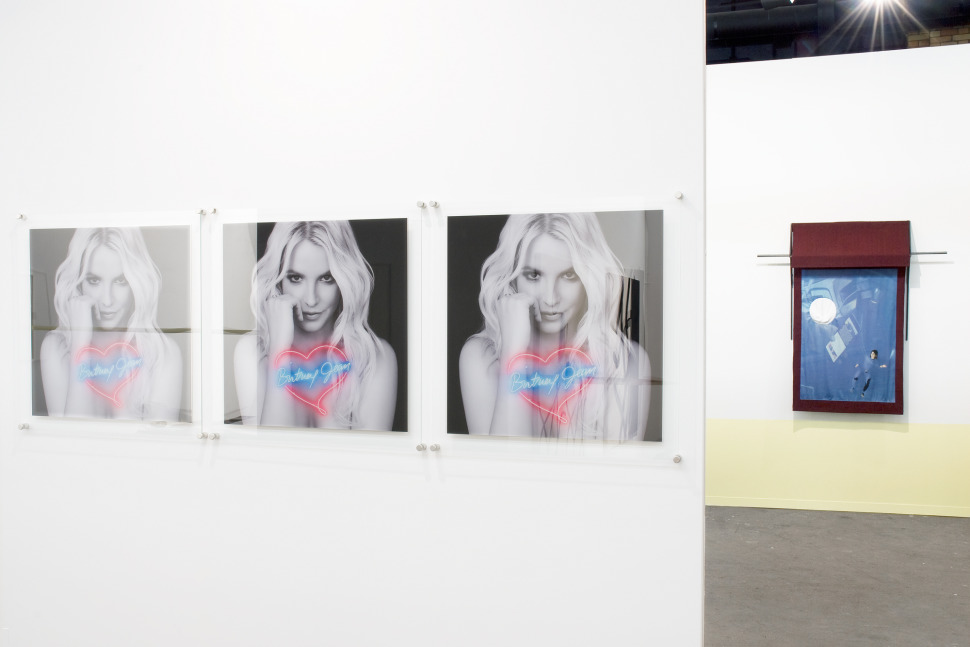
EXILE and Polansky Gallery at Art Brussles 2018, showing Martin Kohout and Christophe de Rohan Chabot.
Two years ago, everyone stood at their fair booths, smiled, and pretended that everything was fine. Now it feels like more and more galleries are willing to speak up about their dissatisfaction with the current system.
I think that it’s great progress that people are speaking up, even though I’m cautious about what it means, because I think we’re only at the beginning of a big shift. And everyone is very actively trying to cover up what really is at stake here.
Can you imagine a gallery like, say, Gagosian or Zwirner being happy having an emerging gallery showing right beside them? That would promote a sense of common ground. But of course, it is utopian and will never happen as it simply defeats capital gains.
Ideas, like David Zwirner had at the New York Times Arts Leaders Conference [to establish an “art-fair tax”], might be well intended, but in fact they just show how out of touch these blue-chips have become. A kind of blue-chip “tax” would in a sense deafen further critical discourse by having them indirectly pay for the select presence of younger galleries that they then, in a sense, sponsor. Independence, 0, Blue Chip, 1.

Kazuko Miyamoto, Florin Maxa: A dialogue. Installation view, EXILE at ONETWENTYEIGHT, New York, 2015.
Some have voiced criticism of Berlin’s art scene for its protectionism. You have been vocal about Gallery Weekend Berlin in particular. Can you elaborate on that?
There is an old story. Berlin gallerist Giti Nourbakhsh was one of the first galleries in [the popular gallery district] Potsdamer Platz and a founding member of Berlin Gallery Weekend. She and two other galleries, Mehdi Chouakri and Eigen + Art, did not get into Art Basel one year, soon after she left Berlin Gallery Weekend’s committee. At that point, the majority of the Basel committee were members of Berlin Gallery Weekend. Each had a different response. Mehdi Chouakri remained silent, while Giti Nourbakhsh went public about it. Guess who was not selected the next year? Giti later closed the gallery, announcing it via a YouTube video where she was dancing to Udo Lindenberg. It is still an inspirational video to not give in to protectorates and bullying. Worth a watch—it’s funny too.
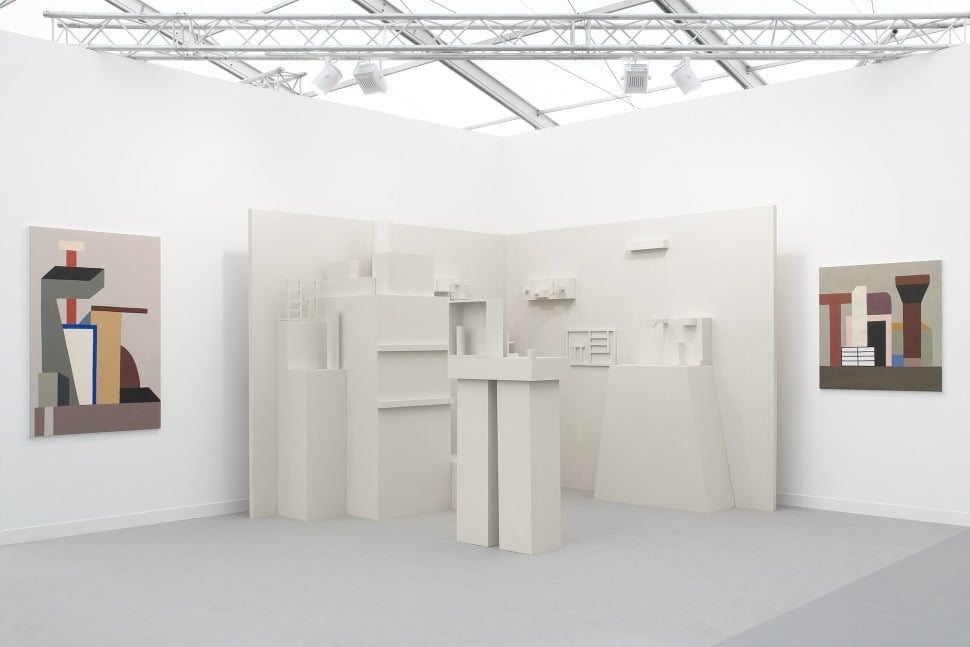
Nathalie Du Pasquier: White model for a big still life, 2016. Installation view Frieze, London.
What’s your own relationship to Gallery Weekend?
Being in Berlin for a decade now, I do have a long history with them. Though I have never been actively invited, I never wanted to be, because I’ve never been in favor of the values they promote. Gallery Weekend Berlin is organised by a for-profit company called abc-gwb Veranstaltungs UG, which is led by a group of established Berlin gallerists. We all know by now how much Gallery Weekend Berlin costs (€7,500 or $8,775 for each of the about 50 galleries who participate), not to mention the funds gained through sponsorship. For this, you receive presence on the website, some invites to the official dinner, and a BMW-sponsored limousine service to chauffeur collectors into your space. As much as I calculate costs, it never seems to add up. As much as I want to see it differently, these are all indicators of a protectorate.
What I find indeed morally wrong and completely out of place is to organize a dinner that costs over €250,000 ($292,808). Such a dinner for about 800 to 1,000 art-world elites seems completely out of touch with an omnipresent Berlin as well as global reality.
Follow artnet News on Facebook:
Want to stay ahead of the art world? Subscribe to our newsletter to get the breaking news, eye-opening interviews, and incisive critical takes that drive the conversation forward.
SHARE

No comments:
Post a Comment